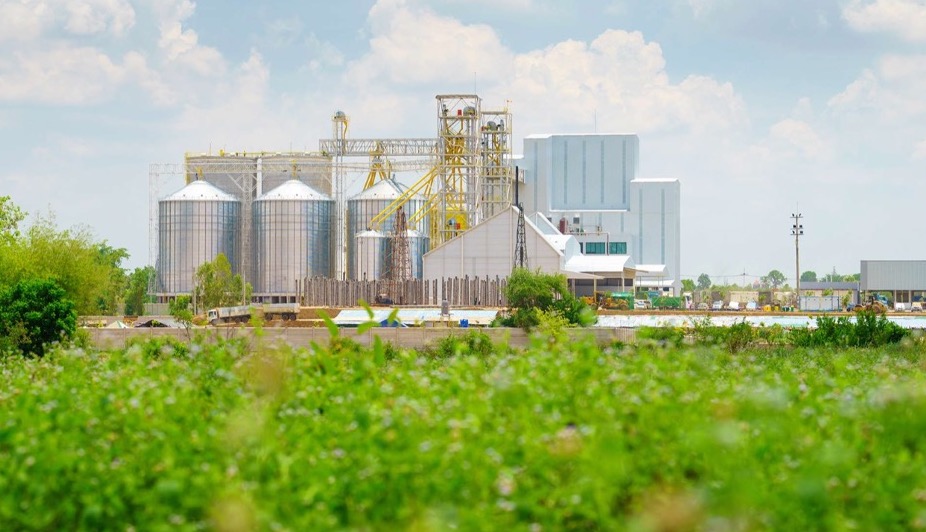By ESG Analyst Antonio Basso

As the global population exceeds 8.2 billion people, the burden of food security remains one of humanity’s most pressing challenges. Factors like urbanization and climate change lead to the destruction of agricultural resources like land and water, as finite resources are stretched thinner than ever before. With the population projected to exceed 9.6 billion by 2050, innovative solutions are required now to ensure global demand can be met in a sustainable manner. This premise was the highlight of a 60-page Deloitte report published during COP29 earlier this month entitled Turning Point: Feeding the World Sustainably.
The problem? Global warming. Rising temperatures jeopardize the stability of waterways and land used for growing crops, and extreme weather events disrupt agricultural stability. Farmers who grow crops for food are placed in a precarious position as the security of their produce is subject to environmental conditions. As time goes on, these situations become more likely to affect primarily developing countries, where food insecurity already exists. The report details the largest issues affecting food security and sustainability today and estimates the opportunity cost of inaction being over US$190 Trillion between 2025-2070.
Solutions From The Report
As part of a five-layered solution, Deloitte analysts claim that technological innovations will drive forward progress in alleviating food insecurity and ensuring long-term sustainability. Advances in crop quality through engineered crops enable increased resilience and yield (the ethics of which are dubious), where crop strains are resistant to high temperatures or pollution. Technlogies such as Precision agriculture are becoming more widespread due to the demonstrated increases in efficiency and ease of use for large-scale farms. This technology specifically allows farmers to micromanage their crops using geospatial data provided by satellites so they can intervene earlier when certain areas are underperforming. Through a combination of these technologies, farmers can make better use of their land and resources while simultaneously increasing crop yields.
Directly addressing the root causes of climate change is a key component to bolstering food supply as well, where Deloitte sets a goal for average global temperatures not to increase by greater than 2 degrees Celsius by 2070. As agriculture is a major contributor to global greenhouse gas emissions (composing 10% of CO2 emissions in the United States), there is a large opportunity for drastic changes if proper solutions are implemented. As an example, several countries are beginning to incorporate methane-reducing feed supplements for live animals, which curbs the amount of this potent greenhouse gas entering the atmosphere and contributing to warming. Unsustainable farming practices such as cattle overgrazing, excessive water use, and monoculture planting are being scrutinized. Introducing diversified crop systems and using new irrigation techniques where possible not only reduces environmental destruction but also ensures greater stability in regard to crop yields. Energy efficiency is also a key aspect to minimize greenhouse gas emissions, where renewable energy sources for operations should be prioritized.
The preservation of the environment and restoration of ecosystems can also contribute to agricultural stability. Pollinators like bees play a vital role in crop production, however their populations dwindle due to habitat destruction and pesticide use. Similarly, water resources are over extracted and polluted due to unclear water protection laws in some jurisdictions. Conservation strategies such as the creation of protected zones replenish habitats, and stricter environmental controls can curb the amount of pollution that enters waterways. Enhanced circularity involves minimizing wastage through the recycling of resources. Organic farm waste can be repurposed as fertilizer or water can be recycled on site, cutting down on wastage as a whole. These practices reduce the environmental cost of farming and serve to promote increased crop yields relative to the resources consumed. Circularity also involves reducing food waste during consumption through supply chain optimizations and advertising to consumers.
Finally, consumers can be guided towards making sustainable and healthy food choices. Consumer demand significantly influences the food industry through the types of products they purchase. Any shifts towards healthier products that are less environmentally taxing such as plant-based proteins, lab grown meats, or other ecologically minded foods lowers the carbon footprint of their diets.
We Must Act Now:
Deloitte’s Turning Point: Feeding the World Sustainably paints a vivid picture of the opportunities that lie ahead in addressing global food security. Rising costs, resource scarcity, and the looming threat of climate change are all reasons why a global effort must be made now to combat food insecurity in the future. The solutions outlined in the report—spanning technological innovation, emissions reduction, environmental preservation, circularity, and consumer guidance—offer a pathway to feed the world in a sustainable fashion. Collaboration across all sectors is required. Governments must establish robust policies and incentives, businesses need to prioritize long-term sustainability over short-term profits, and individuals must embrace more sustainable consumption habits. As the global population continues to grow, the responsibility to build resilient and sustainable food systems cannot be overstated. By taking decisive steps today, we can secure a future where food is abundant, affordable, and accessible—while ensuring the health of our planet for generations to come.
You can read the full report here.
References
- Abdul Aziz, M., Brini, F., Rouached, H., & Masmoudi, K. (2022). Genetically engineered crops for sustainably enhanced food production systems. Frontiers in Plant Science, 13. https://doi.org/10.3389/fpls.2022.1027828
- Deloitte. (2024, November). Turning point: Feeding the world sustainably: Deloitte Netherlands. https://www.deloitte.com/nl/en/issues/climate/feeding-the-world-sustainably.html
- Environmental Protection Agency. (n.d.). Sources of Greenhouse Gas Emissions. https://www.epa.gov/ghgemissions/sources-greenhouse-gas-emissions
- Penn State. (n.d.). Protecting honey bees and other pollinators. Protecting Pollinators. https://www.psu.edu/impact/story/protecting-pollinators/
- Roque, B. M., Van Lingen, H. J., Vrancken, H., & Kebreab, E. (2019). Effect of mootral—a garlic- and citrus-extract-based feed additive—on enteric methane emissions in Feedlot Cattle. Translational Animal Science, 3(4), 1383–1388. https://doi.org/10.1093/tas/txz133
- U.S. Government Accountability Office. (2024, January 31). Precision agriculture: Benefits and challenges for technology adoption and use. Precision Agriculture: Benefits and Challenges for Technology Adoption and Use | U.S. GAO. https://www.gao.gov/products/gao-24-105962#:~:text=Precision%20agriculture%20uses%20technologies%20such,data%20about%20their%20cows’%20health.
